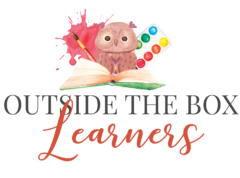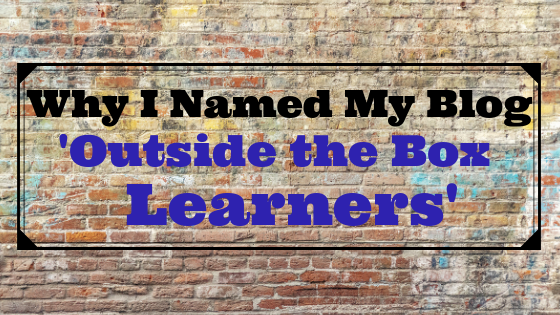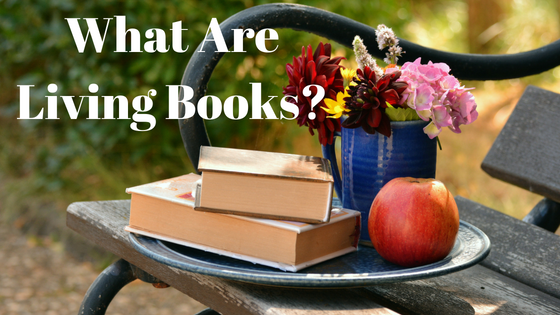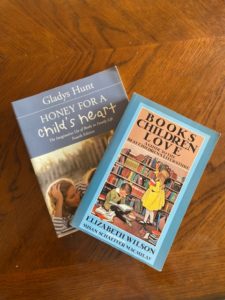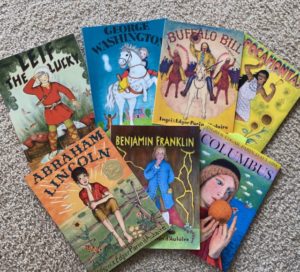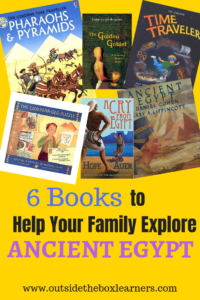Perhaps the most difficult aspect of starting a blog, at least for me, is all the ideas of possible posts that come to you and then having to decide what to write about next. Well… that and the logistics of creating a website! But to think I originally thought I might not have enough to write about! Ha! This has been a fun adventure for me. Re-discovering the joy I experience while writing has been amazing, and the fact that I get to fuse it with my everyday job of homeschooling my kids makes it even better!
My blog is still very young at this point. Before I write any more posts, I wanted to address why I named my blog ‘Outside the Box Learners’. It actually was my first choice for a website name and was thrilled it was available!
Defining ‘Outside the Box’
Let’s start with a definition of ‘outside the box‘. When I hear those words I think of anything that is not conventional, or anything different from the norm. Not mainstream.
According to Dictionary.com, ‘outside the box’ is an idiom that means:
“in an innovative or unconventional manner; with a fresh perspective”
What is an ‘Outside the Box Learner’
This might more appropriately be stated who is an outside the box learner? People are who’s, not what’s, after all! Unless maybe you are a character in a Dr. Seuss book. 😉
Since we’ve already covered what ‘outside the box’ means, it should be clear what an ‘outside the box learner’ is, because we’re just tagging learner to our definition. And thus we get: A learner who learns in an innovative or unconventional manner or a learner with a fresh perspective.
When I first got the bug to start a blog, I knew I wanted to write about my homeschooling experiences both of my son with dyspraxia and also my daughter who is gifted, especially in the creativity arena. From the little research I did about ‘outside the box’ students, it was my guess that my daughter more readily fit the stereotype usually thought of when one hears the words ‘outside the box‘.
Outside the Box Learners Learn in Unconventional Ways
Being the analytical person I am, I really thought about those words ‘outside the box’, specifically how they mean unconventional and outside the norm. I use unconventional methods to homeschool both my 8 and 10-year-old.
For my son, I frequently make modifications to help him succeed, specifically with handwriting, which is very hard for him. He is very asynchronous in that his reading capabilities and handwriting capabilities are lightyears apart. If he was in a regular classroom, he would not be your typical student. I LOVE that I am able to meet him where he’s at and he doesn’t have to feel like he’s “less than” or just “can’t keep up” due to his difficulties with handwriting. And he is able to maintain a love for learning!
My daughter is my creative child who definitely approaches things with a fresh perspective. She is inventive and always thinking of something new to try (as I write this she’s making sushi, which she’s done before, but this time experimenting with new ingredients!). She is in her happiest and most peace-filled state when she is creating something new. Her mind is in a constant state of motion. She hates worksheets and anything conventional really and learns by doing and teaching. In my opinion, she is a poster child for an “outside the box learner”.
Emphasis On Learners
Since I knew I would be writing a lot about my kids and our homeschool, I wanted to emphasize learners in my website name. And really the whole reason I’ve come around to homeschooling the way I do is to meet their needs, which I talk about in this post: How We Became Outside the Box Learners.
They learn in unconventional ways, so I’ve come around to teaching in unconventional ways.
